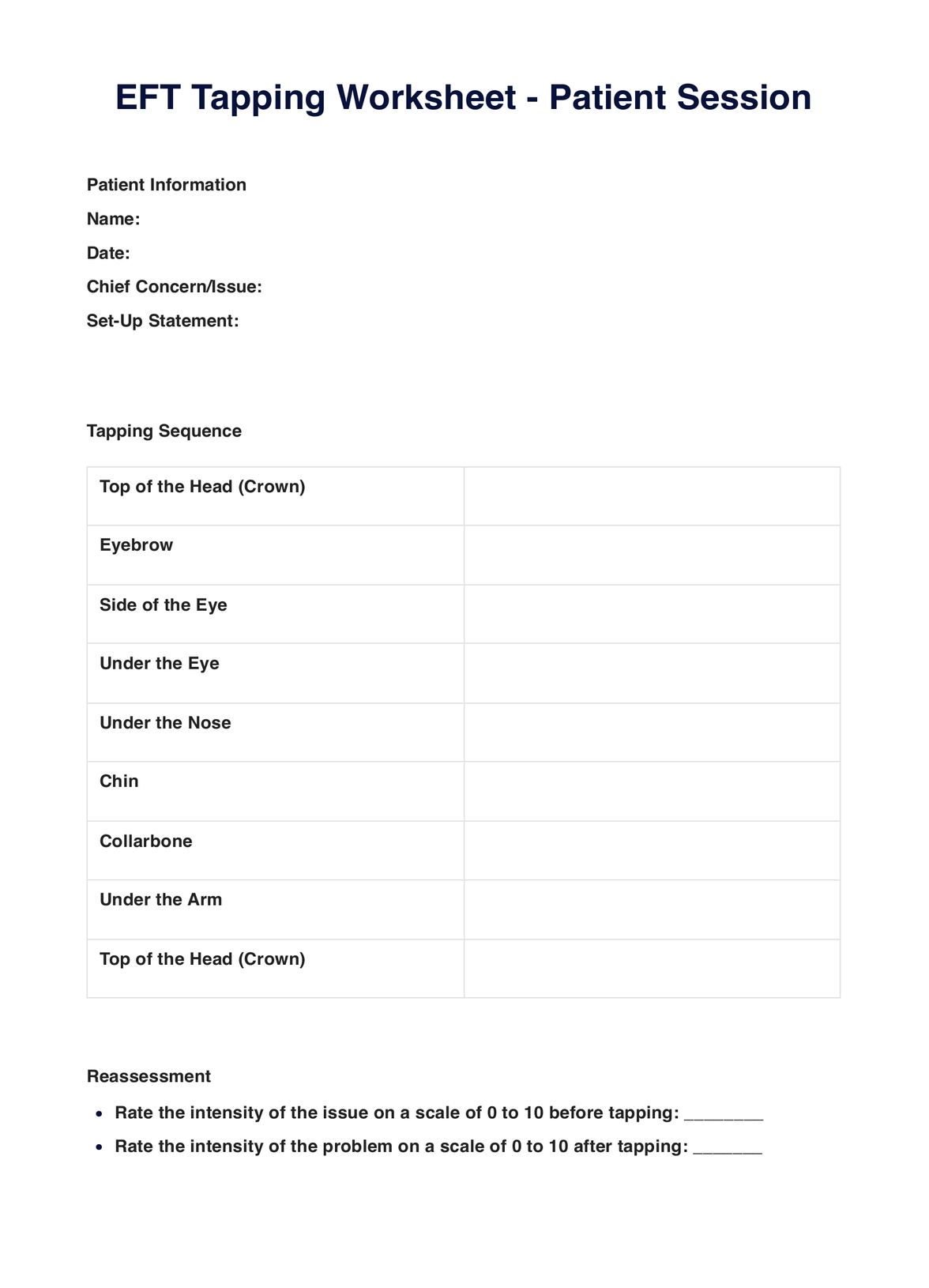The 9 tapping points in EFT include the top of the head, eyebrow, side of the eye, under the eye, nose, chin, collarbone, arm, and back to twin tapping point back on the top of the head.

EFT Tapping Worksheet
Unlock emotional well-being with our free EFT Tapping Worksheet guide. Transform stress into calm serenity through this powerful self-help technique.
Use Template
EFT Tapping Worksheet Template
Commonly asked questions
Tapping frequency varies, but starting with 5-10 minutes a few times daily can be effective. Adjust based on daily habits, personal preference, and the issue's intensity.
Tap each point with your fingertips while expressing thoughts or feelings about a specific issue. Start with the Karate Chop Point, then move your fingers through the sequence. Repeat as needed.
EHR and practice management software
Get started for free
*No credit card required
Free
$0/usd
Unlimited clients
Telehealth
1GB of storage
Client portal text
Automated billing and online payments











